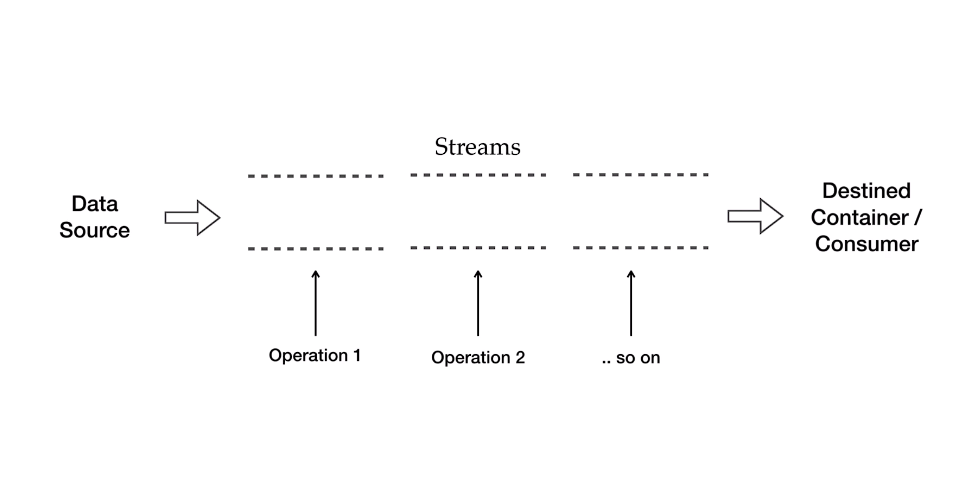Greetings, fellow enthusiasts of programming excellence! In this installment, we embark on an exhilarating journey through the landscape of Java’s Stream API. Streams, a cornerstone of functional programming, offer an elegant and expressive way to manipulate collections and process data in your Java programs. But why should you consider embracing streams? Let’s dive into the essence of streams and explore their myriad benefits.
Table of contents
Open Table of contents
Sections
The Prelude: Streamlining Data Manipulation
Imagine a scenario where you are dealing with collections of data—arrays, lists, or even database records. Traditionally, we would iterate through these collections using loops, filtering and extracting data using conditions, and performing various operations along the way. Java’s Collections and Iterators certainly facilitated this process, but the code often grew verbose and tangled.
Enter Streams: Streams are an innovative mechanism that simplifies data manipulation. With streams, you process data in a more declarative and functional manner, free from the nitty-gritty details of iteration and conditional checks.
The Imperative Approach
Consider an example where you have a list of books and you want to filter out books that fall into a specific genre or have a certain rating. Before streams, the code might look like this:
List<Book> books = // ... list of books
List<Book> horrorBooks = new ArrayList<>();
for (Book book : books) {
if (book.getGenre().equalsIgnoreCase("horror") && book.getRating() > 3) {
horrorBooks.add(book);
}
}
While functional, this code can become intricate as filtering conditions grow or more operations are required. Streams offer an alternative that is both concise and comprehensible.
The Streamlined Approach with Streams
Now, let’s reimagine the above scenario using Java Streams:
List<Book> books = // ... list of books
List<Book> popularHorrorBooks = books.stream()
.filter(book -> book.getGenre().equalsIgnoreCase("horror"))
.filter(book -> book.getRating() > 3)
.collect(Collectors.toList());
This streamlined code utilizes the power of streams. It starts by transforming the list of books into a stream using the .stream() method. Then, it employs the filter operation twice, first for the genre and then for the rating. Finally, it collects the filtered books into a list using the .collect() method.
Unlocking the Potential of Streams
Streams offer a host of benefits that enhance both the readability and performance of your code:
1 - Declarative and Readable:
Streams let you express your intentions more clearly. Each operation represents a step in your data manipulation process, leading to code that reads like a sequence of operations rather than a maze of loops and conditions.
2 - Functional Operations:
Streams provide an array of functional operations, such as map, filter, sorted, and reduce. These operations enable you to transform, filter, order, and aggregate data with ease.
3 - Lazy Evaluation:
Streams are evaluated on-demand, which means intermediate operations like filtering are only executed when the final result is needed. This optimization improves efficiency by processing only the required data.
4 - Parallel Processing:
Streams inherently support parallel processing. By using .parallelStream() or .parallel() on a stream, you can distribute the work across multiple cores, leading to significant performance gains for large datasets.
5 - Simplified Code:
Stream operations replace complex, nested loops and conditions with concise, chainable operations. This simplification reduces code complexity and the likelihood of bugs.
6 - Code Reusability:
Stream operations can be easily combined to create complex data processing pipelines. These pipelines can be reused across various parts of your codebase, promoting code modularity.

Wrapping Up
The streams design pattern is a powerful tool for managing actions and encapsulating behavior. In the realm of functional programming, the pattern aligns beautifully with the principles of immutability and composability. By embracing higher-order functions and lambdas, we create a streamlined and elegant implementation of the streams pattern that simplifies our code and enhances its maintainability.
In our next session, we’ll explore yet another captivating pattern in the context of functional programming. Until then, keep honing your functional programming skills and experimenting with new patterns and ideas!
You can find the repo for this section of the course Here